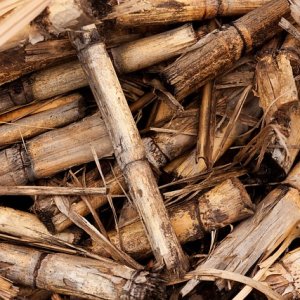
Sargassum Could Be Used to Produce Biogas
 By Eliza Galeana | Junior Journalist & Industry Analyst -
Mon, 02/13/2023 - 08:27
By Eliza Galeana | Junior Journalist & Industry Analyst -
Mon, 02/13/2023 - 08:27
Every year, huge quantities of sargassum arrive on the coasts of the Mexican Caribbean, affecting tourists as well as disrupting the ecological balance of marine and coastal ecosystems. To help manage this problem, researchers have proposed to use the sargassum to produce biogas that can be used to generate electricity.
Sargassum is a kind of seaweed that under normal conditions blooms and remains out in the ocean, providing a floating habitat for fish, shrimp, eels, turtles and birds. However, between 2011 and 2015, huge quantities began to pile up on the Caribbean coastlines, from the Lesser Antilles to Mexico’s Yucatan peninsula, causing an economic and ecological crisis.
President López Obrador allocated an investment of MX$2.6 million (US$139,246) to manage the problem through the sargassum strategy managed by the Ministry of the Navy. The navy, along with local governments, has collected around 200,000t of sargassum on 40 public beaches over the past four years. Nevertheless, since there are no federal regulations regarding what to do with the algae, sargassum ends up on the side of roads, in sanitary landfills or even in plots excavated inside the jungle after it is collected. According to researchers, this can create an even bigger problem since sargassum contains high levels of heavy metals, including arsenic, which are released into the soil as it decomposes. This could potentially pollute groundwater.
Norma Muñoz, Researcher, the National Polytechnic Institute (IPN), stressed that the most viable solution to manage sargassum is to convert it into biogas. The gas could be used to generate electricity for tourist resorts in the region, as well as biofuel for local public transportation fleets. “So far, sargassum has been treated as waste, but we are working so it can be used as biofuel and biofertilizers under the premise of zero waste, that is, to avoid generating polluting waste derived from the processes," said Raúl Tapia, Director Renewable Energy Unit, the Scientific Research Center of Yucatán.
No commercial biogas plants are operating in the Caribbean region but Nopalimex, a Mexican company that owns a fleet of biodigesters in the state of Michoacan, has plans to open a plant in the area. "In 2019 we brought 45t of sargassum to Michoacan to run tests. It turns out that sargassum has great potential to become biogas, with a 58-65% of methane content," said Miguel Ángel Ake, Founder, Nopalimex.
Nopalimex wants to build a biodigester plant in Cancun with the capacity to process up to 150t/day of sargassum and produce 20,000 m3/day of biogas, enough fuel to power 500 cars. Additionally, the plant would also generate 60,000L/day of biofertilizers. Even though the initial cost of the plant is MX$2.5 million (US$133,890.3), local companies have shown a lot of interest in it since the current costs of dealing with sargassum are high. Hotel companies in Quintana Roo are spending up to MX$100 million (US$5.3 million) each year to remove sargassum from beaches.
The proposal does not come without its challenges. Industrial-scale plants would require vast supplies of algae, a situation that could result in overexploitation. In addition, the impact of large-scale sargassum collection on local ecosystems remains unknown. And finally, without proper regulation, any attempt to create an industry around sargassum conversion could result in more waste and pollution management problems. Nonetheless, if it becomes a success, the project could become an integral solution for the removal of sargassum from the coasts and at the same time provide a new clean energy alternative to the region.
















